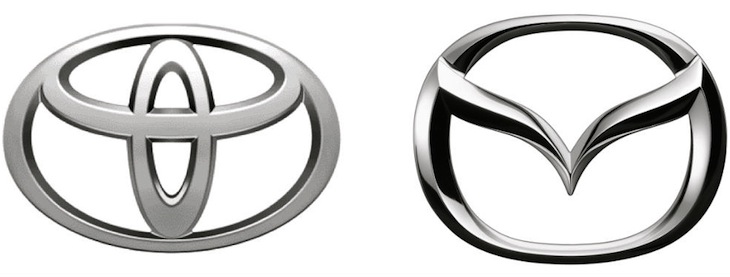Marion officials hope to secure former super site for proposed Toyota-Mazda plant
by August 28, 2017 6:22 pm 1,399 views

Arkansas is one of 15 states hoping to land a $1.6 billion automobile plant Mazda and Toyota plan to jointly build by 2021, and a “super site” in Marion could be the state’s location pitched to the Japanese-based companies.
A 1,200-acre tract was considered for auto plants in 2003 and 2011, and officials are attempting to acquire an option to buy the land if the project moves forward, Marion Chamber of Commerce President Mike Demster told Talk Business & Politics.
The land was certified as an industrial super site, but that designation has lapsed, Demster said. The first step will be to acquire an option to buy the land, owned by the Wallace family. Attempts were underway to acquire the option before the Aug. 18, announcement that Arkansas submitted a bid to land the plant. Demster is optimistic the option will be secured, he said.
“It’s an ideal location for a major project,” he said. “We’re in a dialogue with the family.”
The Toyota-Mazda joint venture is expected to employ up to 4,000 workers and have an estimated annual production capacity of approximately 300,000 units. The two Japanese automakers recently issued a blind request for proposals from states in the Midwest, mid-Atlantic and South. State economic development officials delivered preliminary proposals, including potential tax incentives, job training programs and infrastructure investments after they were told an unidentified employer was weighing its options for a massive project under the code name “Project Mitt.”
Mazda will build cross-over models it plans to introduce in the North American market. By producing vehicles in the U.S., Mazda said it aims to build a production structure to further grow in North America and allow the company to better respond to customer needs depending on the region and model.
Toyota, the world’s largest automaker, plans to produce the Corolla for the North American market at the new U.S. facility. By further increasing its production capacity in the U.S., Toyota said it is pursuing management that is closer to the region and responding to the growing North American market that stretches from Canada to Mexico.
Not surprising, Marion officials believe their super site is the ideal location. The site is on flat ground, and is adjacent to a Union-Pacific intermodal terminal that operates on a 600-acre swath. The property is contiguous and all the necessary utilities available. It’s 10 miles from Memphis, one of the major commerce hubs in the United States. The port of Memphis, located on the Mississippi River, is the third largest in the country.
Five class one railroads operate in the area. At least two rail lines have direct access, and single-system shipments can be made to all lower 48 states, Alaska, Canada, and Mexico. Two major U.S. highways intersect in West Memphis. Interstate 40 connects the West Coast with the East Coast, and I-55 connects Canada with Mexico. Major urban distribution centers such as Los Angeles, Chicago, St. Louis, New Orleans, and others are connected to these routes.
FedEx operates the largest cargo freight operation in the world in Memphis and the Memphis International Airport is located there. At least 152 major metro markets can be reached overnight by truckers from Memphis, more than any other city in the U.S.
Hino Motors Corp. launched an expansion of a 110,000-square-feet production line at its facility in Marion in May. New workers hired since 2013 will manufacture rear axles and front knuckle assemblies for Toyota Tacoma trucks. Hino Motors located its Toyota business unit operation in eastern Arkansas four years ago. Toyota Tacoma axle and suspension products were already being made in Marion.
One problem Toyota has had locating a plant in Marion is that it’s far from the company’s parts and supply-line facilities. What incentive package the state will offer to land the plant has not been disclosed. Demster said he expects all parties involved to remain tight-lipped until a potential deal is outlined.
The site is above the 100-year flood plain. The site has so many transportation advantages that Southern Businesses & Development once designated it as the best place in the South to build an automotive plant. How long it will take to get the option is uncertain, but Demster said he’s confident a deal can be struck. It’s been a finalist for a Toyota plant before, and Demster hopes it can take one step further and land “the unicorn” of all economic developers dreams – an auto plant.
“If you’re moving large amounts of product you don’t want to be in Manhattan or Omaha,” he said. “You want to be right here. This is the right place for that plant.”
